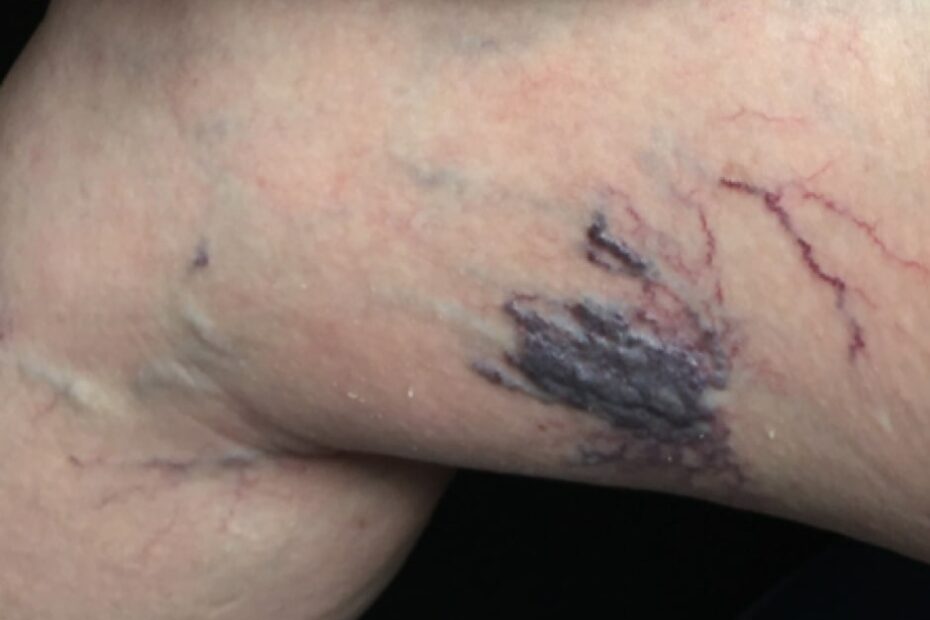Sclerotherapy is one of the most popular treatments for enlarged and twisted veins known as varicose veins. Varicose veins are commonly seen in females more than males and usually occur after 30 years of age. In the upcoming article, we will go through a brief overview of trapped blood after sclerotherapy, related questions, and Pictures of Trapped Blood After Sclerotherapy!
Sclerotherapy is a process in which a solution is directly injected into the affected vein/s. This solution then acts on the inner surface of the veins and causes scarring. This scar then gets resorbed into the blood and makes the blood pump through the healthier blood vessels. Thereby helping the disappearance of the blood-trapped spider veins.
This was a short intro to how sclerotherapy works on your varicose or reticular veins. Now coming to the most important question- What does trapped blood look like after sclerotherapy? After that, we will see a few pictures of trapped Blood After Sclerotherapy and answer some FAQs!
What does trapped blood look like after sclerotherapy?
Trapped blood looks much dark after sclerotherapy which is to be expected as a common side effect of the procedure. You may also notice some patches of hyperpigmentation in the veins.
You may also see some red patches over the injection site a few hours after the sclerotherapy! This is a pretty normal finding and usually resolves within a few days.
5 Pictures of Trapped Blood After Sclerotherapy
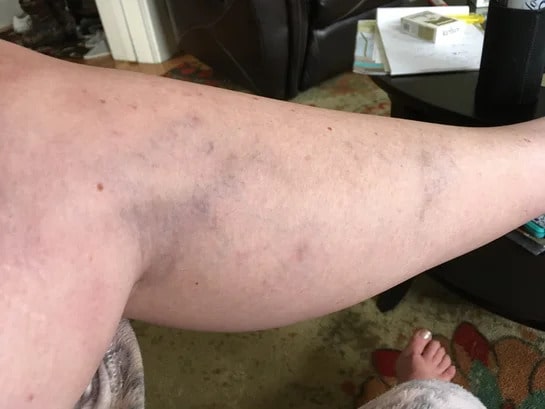
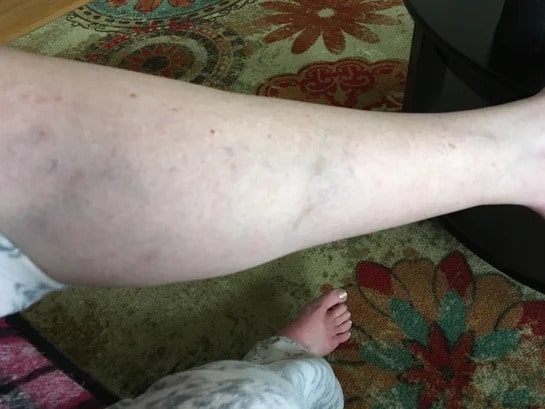
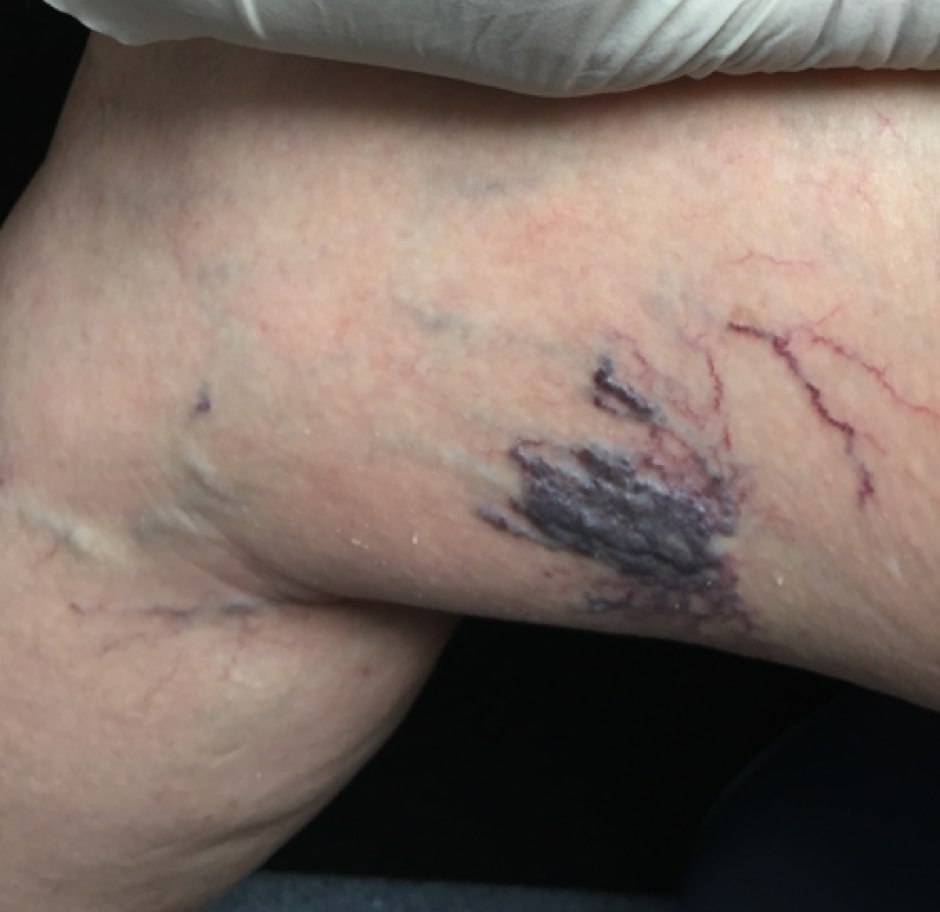

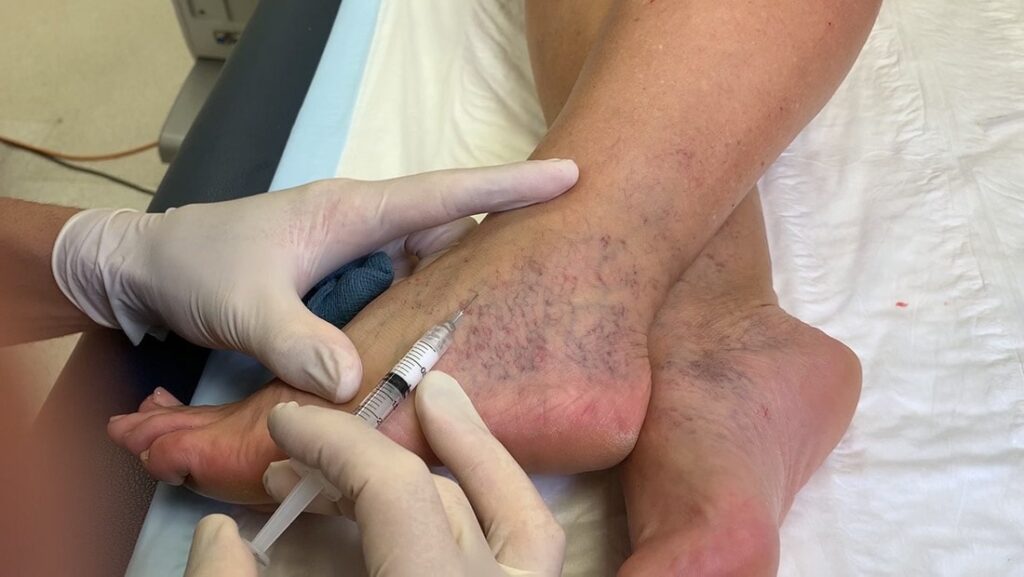
Double picture to fix the process of sclerotherapy for varicose veins. As you can see, there are multiple spider veins or reticular veins near the ankle region of the subject.
How long does trapped blood last after sclerotherapy?
The trapped blood usually goes away on its own within 3 to 4 weeks. Because in the procedure of sclerotherapy, the inner lining of the veins is sclerosed. This means that the body will self-absorb the dead and decaying tissue.
But in case, if the blood is trapped for more than two months or so then you should consult your physician. Moreover, if you see any dense hyperpigmentation around the area of injection then you can seek advice from the expert.
How do you get rid of trapped blood after sclerotherapy?
In most cases, there is no need to get rid of trapped blood after the sclerotherapy process. But if the blood is trapped for a longer duration, then you can perform certain activities. Such as give a warm compress to the area for a few minutes at least one time a day.
similarly, you should avoid going in the bright sunlight and avoid direct exposure to the injected site to avoid hyperpigmentation.
Will trapped blood go away?
Yes, the trapped blood will go away on its own. And there is no need to panic if you start to see the collection of brownish, blackish blood in your lower limbs. Rather, if you are very much concerned about this, then you should see your consultant physician and ask him about it.
Conclusion
In most of the cases trapped blood after sclerotherapy goes away on its own. Therefore, there is no need to panic if you see some amount of patches of collected blood in your legs.
Nevertheless, it is always good to be on the safe side and seek the expert’s opinion. Therefore, never hesitate to visit your consultant or doctor, and clear all the doubts that you have in your mind.
So this was the end of the article- 5 Real Pictures of Trapped Blood After Sclerotherapy & FAQs! I hope you liked it, if so, kindly read our other articles too-
How to get a Bicep Vein- 7 Things to Consider!
